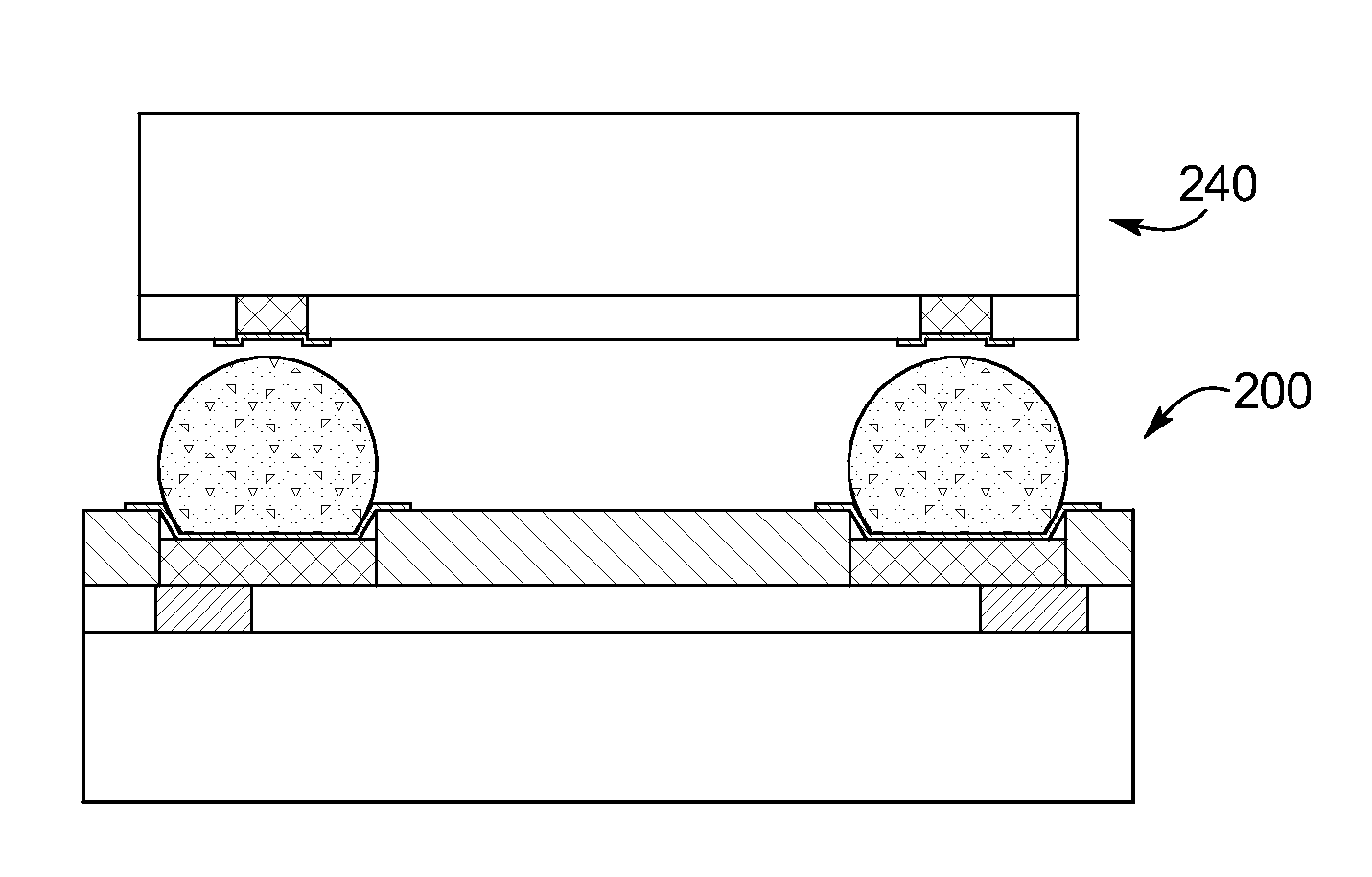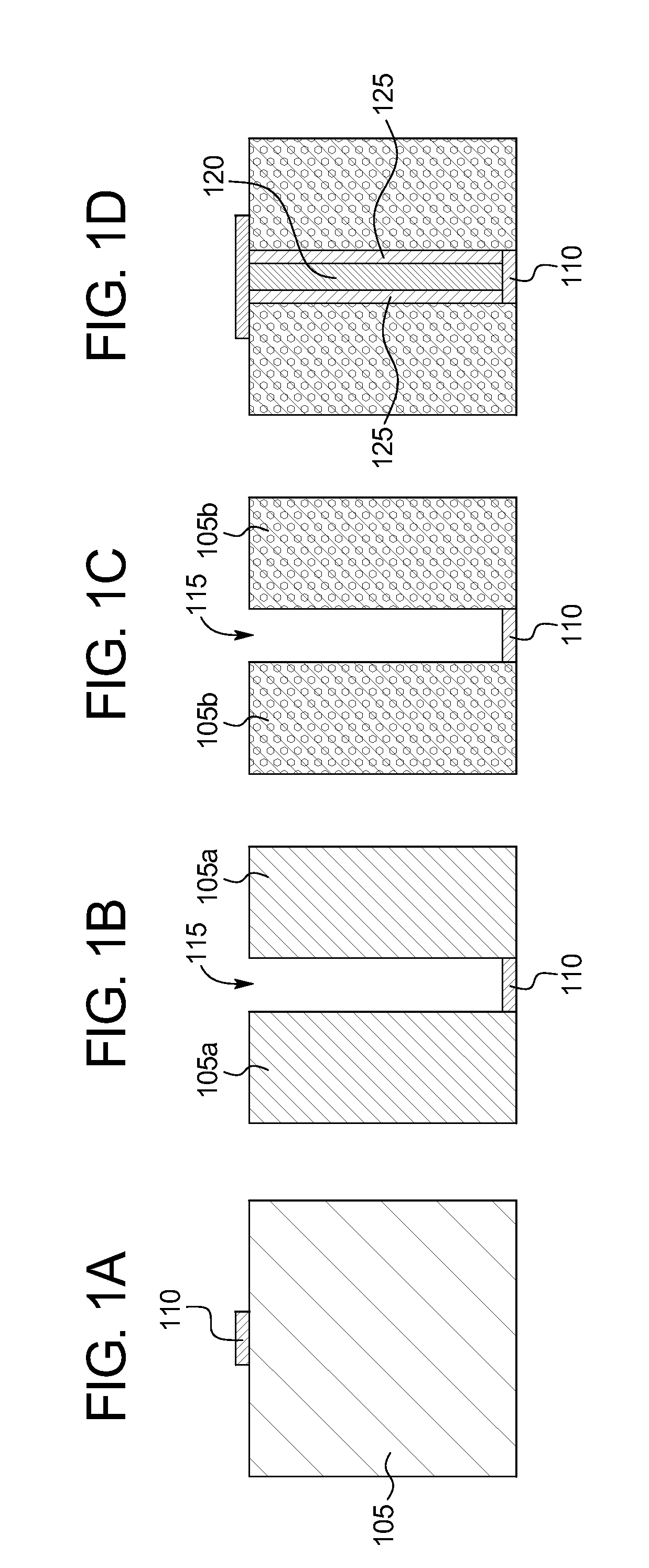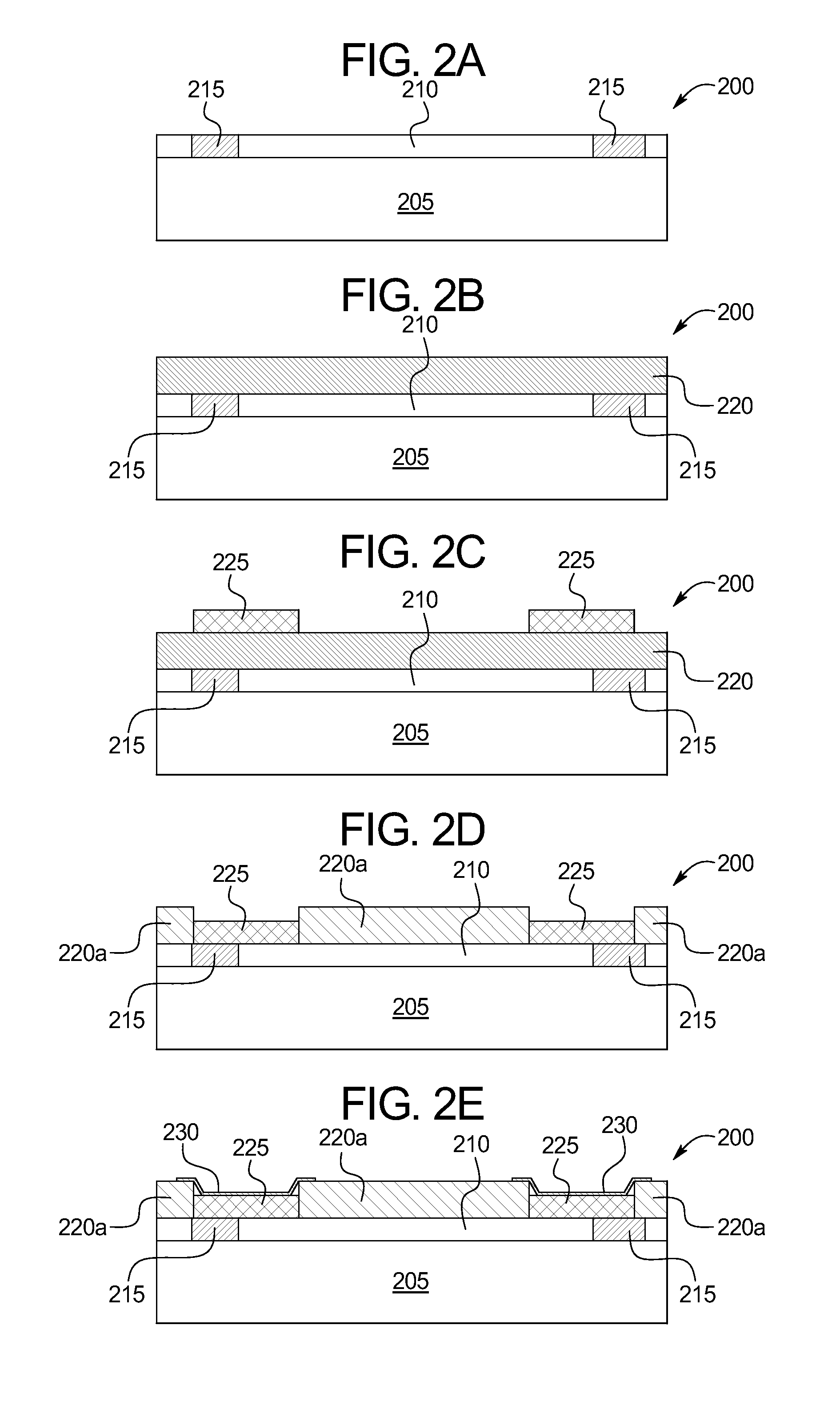Method of forming nanoscale three-dimensional patterns in a porous material
a three-dimensional pattern and porous material technology, applied in the field of semiconductor fabrication, can solve the problems of large-area fabrication methods for producing nano-scale (100 nm) patterned porous silicon, inability to achieve spatial resolution of these techniques, and inability to achieve large-scale etching damage, etc., to achieve the effect of facilitating wafer level packaging integration
- Summary
- Abstract
- Description
- Claims
- Application Information
AI Technical Summary
Benefits of technology
Problems solved by technology
Method used
Image
Examples
example
[0045]Various nanoscale patterns, including dot, mesh, lines, grids, boomerang contour arrays in the range of from about 10 nm to about 100 nm in dimension, were written on PMMA on p− type (100) Si substrates (7 Ωcm) using electron beam lithography at 50 kV. Platinum (Pt) and titanium (Ti) metals were evaporated and followed with standard lift-off. Metal patterned substrates were then etched in a H2O2 metal-HF (HOME-HF) etchant for 15˜60 seconds. Morphology resulted from etching was examined with scanning electron microscopy (SEM) and atomic force microscopy (AFM). Optical properties of the etched samples were also characterized, as described in Chun et al., Applied Physics Letters 92, 191113 (2008) 1-3, which is hereby incorporated by reference in its entirety.
[0046]Shown in FIG. 3A is a SEM image of an array of Ti / Pt dots of 15 nm in height (5 nm Ti followed by 10 nm Pt), 15 nm in diameter and 100 nm in pitch patterned on a p− type silicon substrate. FIG. 3B shows the pattern afte...
PUM
 Login to View More
Login to View More Abstract
Description
Claims
Application Information
 Login to View More
Login to View More - R&D
- Intellectual Property
- Life Sciences
- Materials
- Tech Scout
- Unparalleled Data Quality
- Higher Quality Content
- 60% Fewer Hallucinations
Browse by: Latest US Patents, China's latest patents, Technical Efficacy Thesaurus, Application Domain, Technology Topic, Popular Technical Reports.
© 2025 PatSnap. All rights reserved.Legal|Privacy policy|Modern Slavery Act Transparency Statement|Sitemap|About US| Contact US: help@patsnap.com



